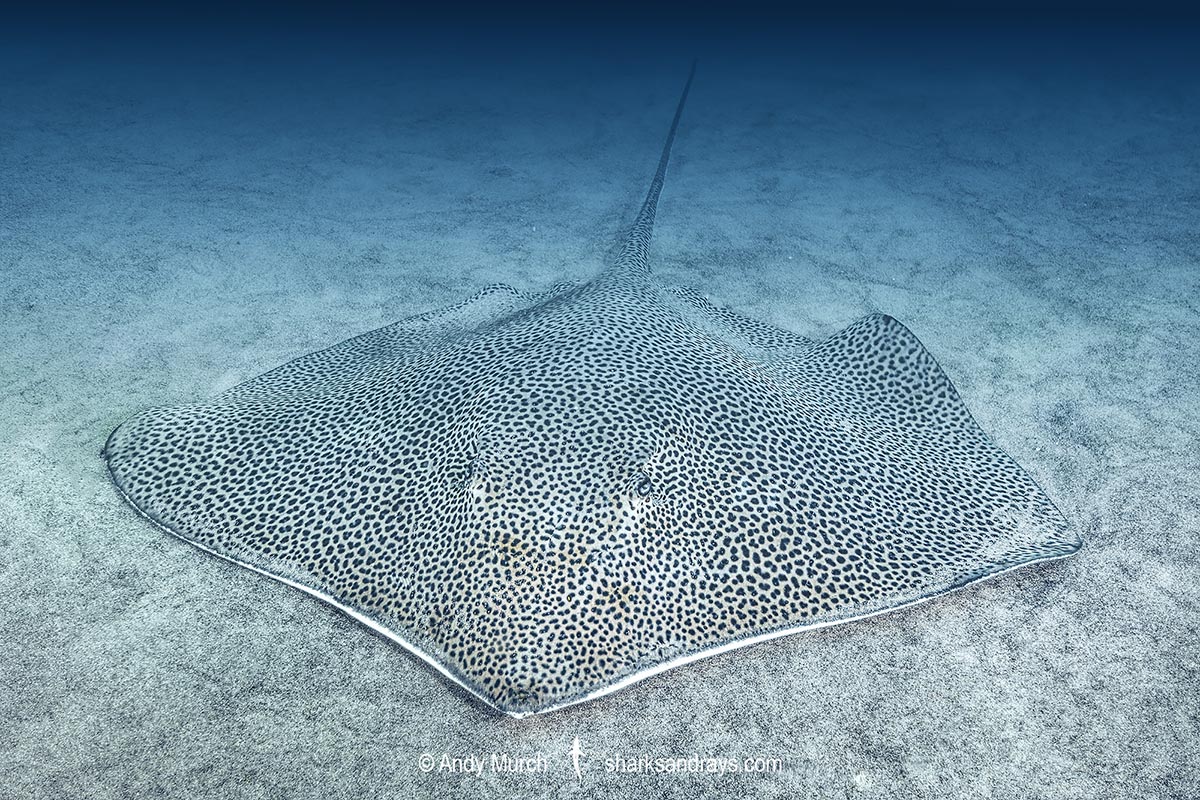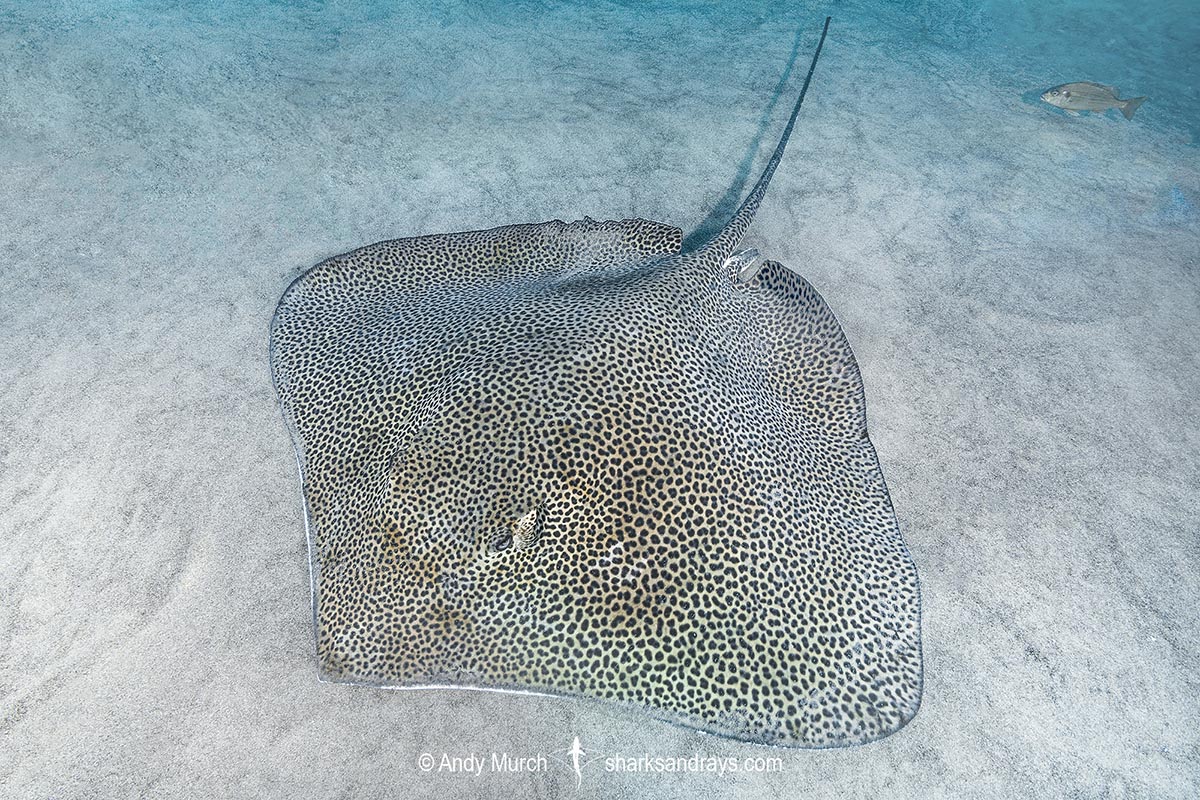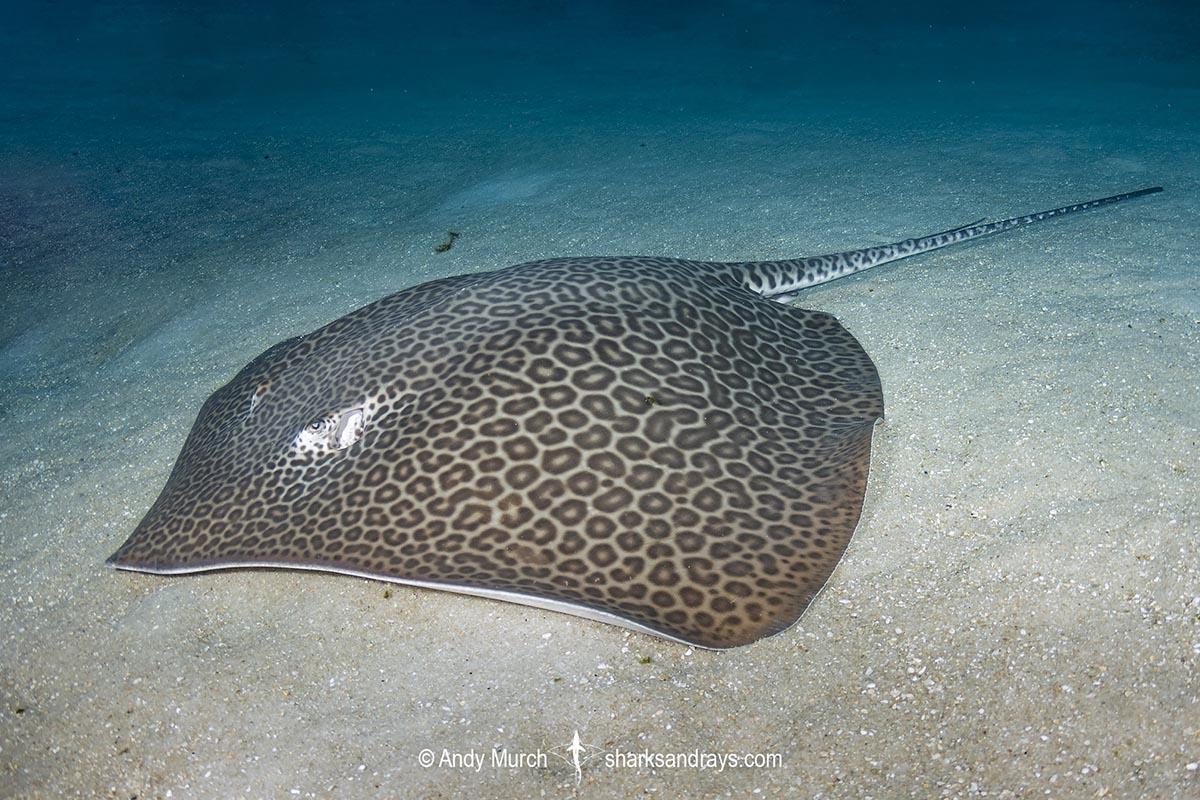Common names
Reticulate Whipray, Coach Whipray.
Binomial
Himantura uarnak.
Synonyms
Dasyatis uarnak, Dasybatus uarnak, Himantura punctata, Raja sephen uarnak, Raja uarnak, Trygon punctata, Trygon uarnak.
Identification
A large stingray with a kite-shaped disc that is slightly wider than long. Disc width 1-1.1 x length. Snout relatively short with an obtusely angular point. Anterior margins of disc mildly concave. Pectoral fin apexes narrowly rounded or somewhat angular.
Eyes small and protruding. Snout length 2.1-2.2 x combined eye and spiracle length.
Mouth usually contains 4 oral papillae; central papillae occasionally have small papillae between them. Prominent labial furrows and folds around mouth. Mouth slightly arched. Lower jaw concave at symphysis. Wide, short, skirt-shaped nasal curtain with a finely fringed posterior margin.
1-3 small heart-shaped thorns on central disc. Well developed denticle band (in adults) extends onto tail. Tail narrow-based, tapering evenly to caudal sting, then whiplike or filamentous to tip. Small, sharp thorns on tail beyond caudal sting. Tail length (when intact) 3-3.5 x disc width. Caudal folds absent. One caudal sting usually present.
Colour
Dorsum pale, tan, or greyish-brown with a dense pattern of small dark spots. Juveniles similarly similarly covered in small black spots. Subadults may display a reticulate pattern. Tail weakly banded beyond sting. Ventrum white.
Size
Maximum disc width at least 160cm. Disc width at birth approximately 21-28cm.

Conservation Status
ENDANGERED
The Reticulate Whipray (Himantura uarnak) is a targeted and bycatch component in trawl, gill net, and longline fisheries throughout much of its range. It is generally retained for the meat which is considered to be very good quality.
Overfishing of reticulate whiprays occurs across the species’ entire range. Non-specific data of whipray in Malaysia and Indonesia indicate a probable population reduction of 50–99% over the past three generation lengths. Globally, the Coach Whipray is suspected to have undergone a population reduction of 50–79% in the last 75 years.

Habitat
Sub-tropical/tropical seas. On soft substrates, sometimes adjacent to reefs. From shallow estuaries to at least 50m. Known to enter freshwater.
Distribution
Indian Ocean and west Pacific. Found from South Africa, Madagascar, East Africa, Red Sea, Persian Gulf, India, and Southeast Asia from The Philippines to Indonesia.
Reproduction
Matrotrophic aplacental viviparity. Two pups per litter.
Diet
Invertebrates and small benthic fishes.
Behavior
Sedentary. Spends much of the day resting on the substrate.
Reaction to divers
Shy but approachable with non-aggressive movements. Generally bolts if approached closely.
Diving logistics
Reticulate or coach whiprays are probably encountered at numerous dive sites throughout the Indian Ocean and southeast Asia but divers have a hard time identifying the four spotted himantura species from one another so advice on where to find reticulate whiprays is currently unavailable.
The problem of positive identification is exacerbated by the regional use of a variety of common names that are applied to different species in different areas. The following names are sometimes applied to all four himantura species: leopard whipray/stingray, reticulated whipray/stingray, coach whipray, and honeycomb whipray/stingray.
Within the area where reticulate or coach whiprays are probably present, at the Ad Dimaniyat Islands off the northeast coast of Oman, rays of the himantura species-complex are apparently abundant (Intel Christophe Chellapermal).
What’s new
View our full list of updates
Similar species
Leopard Whipray A very similar ray with a sympatric range (unconfirmed in Australia). Distinguished by dense covering of small black spots that form leopard-like rings.

